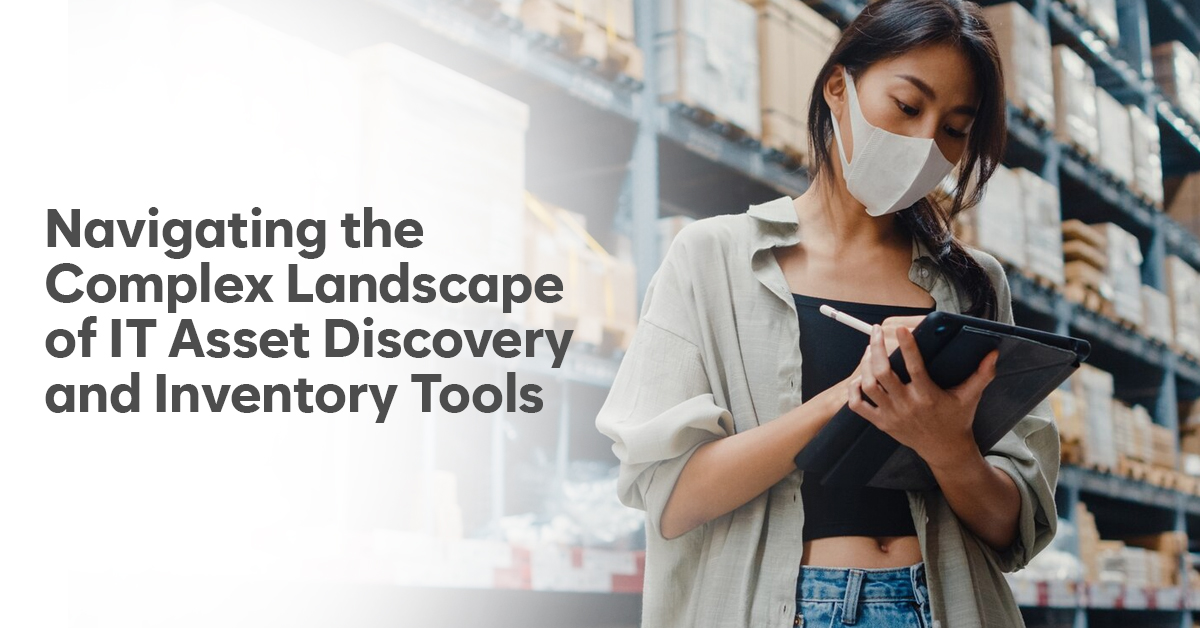In the ever-evolving realm of Information Technology (IT), managing and maintaining a comprehensive inventory of assets is crucial for organizations of all sizes. As businesses increasingly rely on digital infrastructure, the need for effective IT asset discovery and inventory tools has become more pronounced.
In this blog post, we will delve into the complex landscape of these tools, exploring their significance, challenges, and key considerations for successful implementation.
The Significance of IT Assets Discovery and Inventory
IT assets encompass a wide range of elements, including hardware, software, networking equipment, and more. Keeping track of these assets is fundamental for several reasons. Efficient IT asset management ensures optimal utilization of resources, aids in identifying security vulnerabilities, facilitates compliance with regulatory requirements, and ultimately contributes to the overall health and functionality of an organization’s IT infrastructure.
Asset discovery is the initial step in this process, involving the identification and classification of all IT assets within an organization. This includes devices connected to the network, software applications, and other components. Following discovery, inventory tools are utilized to maintain a detailed record of these assets, tracking changes, upgrades, and decommissioning activities.
Challenges in IT Assets Discovery and Inventory
Despite the critical importance of IT asset discovery and inventory, organizations often face challenges in implementing effective solutions. Some common hurdles include:
Dynamic IT Environments: In modern IT landscapes, environments are dynamic and ever-changing. New devices and software are added regularly, and without robust tools, keeping up with these changes can be daunting.
Diversity of Devices and Platforms: The proliferation of diverse devices and platforms adds complexity to asset management. From traditional desktops and servers to mobile devices and cloud-based services, organizations must contend with a broad spectrum of assets.
Security Concerns: Security is paramount in IT, and asset management plays a crucial role in identifying vulnerabilities. Incomplete or outdated inventories can leave organizations exposed to potential threats.
Scalability: As organizations grow, the sheer volume of IT assets can become overwhelming. Scalability is a significant concern, as solutions must be capable of handling increasing quantities and varieties of assets.
Key Considerations for Successful Implementation
Comprehensive Asset Discovery: Effective asset discovery tools should provide a comprehensive view of all devices and applications on the network. These should include those in remote locations and cloud environments as well. This ensures that nothing goes unnoticed, enhancing security and compliance.
Real-time Monitoring and Updates: Given the dynamic nature of IT environments, real-time monitoring is crucial. Tools that provide continuous updates and alerts for changes in the asset inventory empower organizations to respond promptly to potential issues.
Integration Capabilities: Seamless integration with existing IT systems and workflows is essential. The chosen tools should be able to integrate with other management and monitoring solutions, facilitating a unified approach to IT operations.
Automation Features: Automation can significantly streamline the asset discovery and inventory process. Look for tools that automate routine tasks such as asset scanning, data collection, and reporting, reducing the burden on IT teams.
Scalability and Flexibility: As organizations grow, the selected tools should scale accordingly. Solutions that are flexible enough to adapt to changing requirements and accommodate new technologies ensure long-term viability.
Security Features: Security should be a top priority. The tools should not only identify assets but also assess their security posture. This includes vulnerability scanning, patch management, and the ability to flag unauthorized or non-compliant devices.
User-Friendly Interface: A user-friendly interface is essential for effective use of IT asset discovery and inventory tools. Intuitive dashboards and reports simplify navigation and enhance the usability of the system.
Conclusion
In the rapidly advancing landscape of IT, the effective management of assets through robust discovery and inventory tools is indispensable. While challenges abound, organizations can navigate this complex terrain by carefully considering the features and capabilities of available solutions. By choosing tools that align with their specific needs, organizations can not only streamline their IT operations but also enhance security, compliance, and overall efficiency. As technology continues to evolve, the importance of staying vigilant in asset management cannot be overstated, making it a cornerstone of successful and resilient IT infrastructures.





